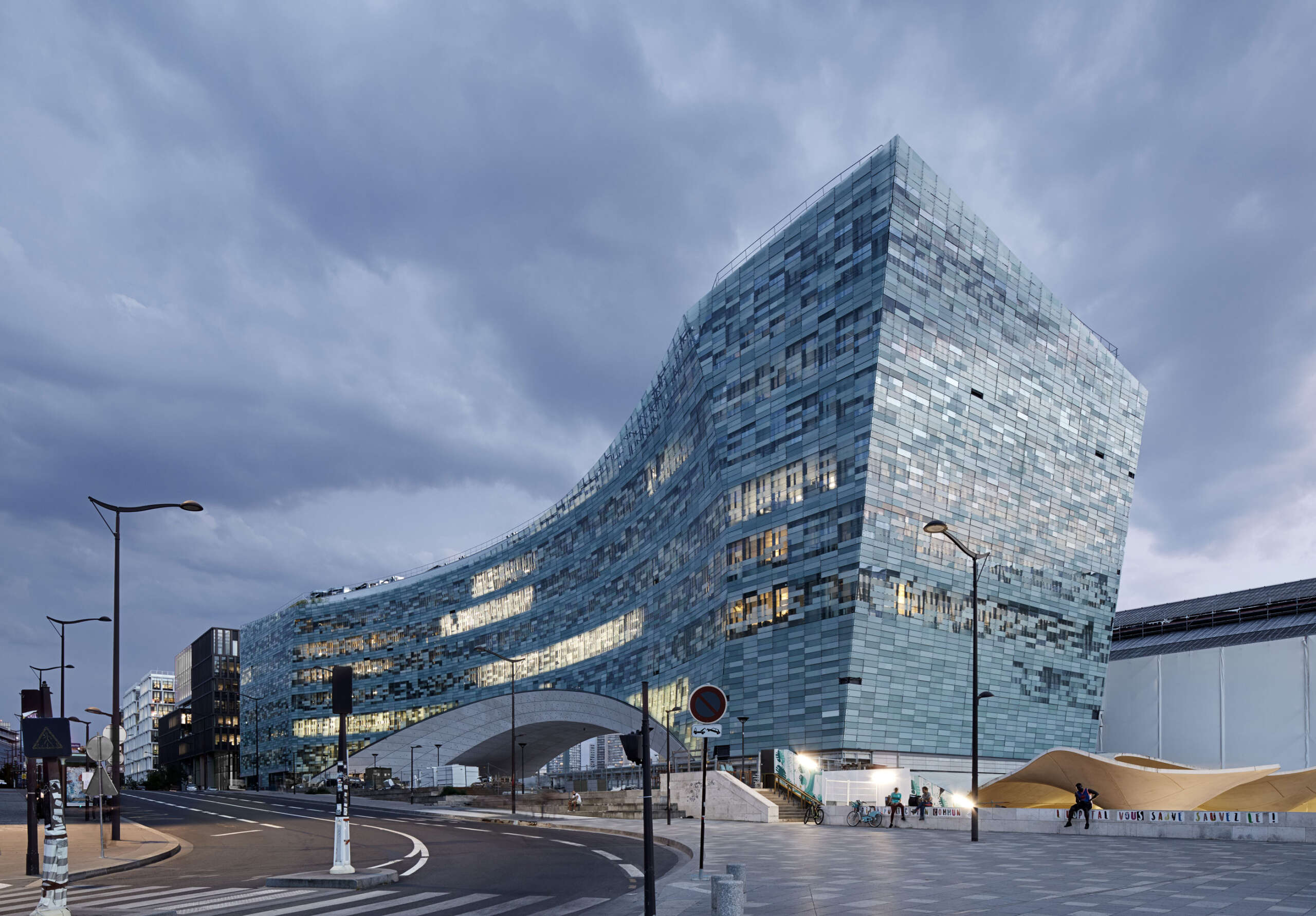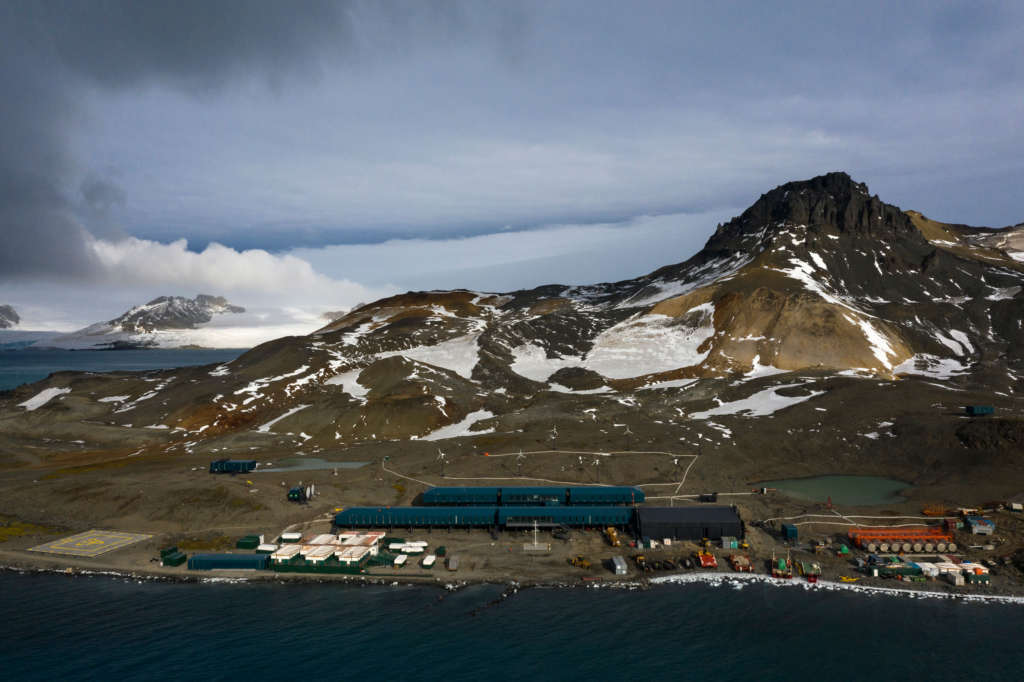
The following description is courtesy of Estúdio 41.
The winning project in the international competition for the reconstruction of the Brazilian station in Antarctica.
Design and build for Brazil in Antarctica
In certain places on the planet, nature sometimes creates adverse conditions for the human body. In these places, thinking about a building is almost like building a garment, an artifact that protects and comforts. This is a technological performance problem, but it must be combined with aesthetics. Making human beings feel good is more than working on the notions of comfort and safety, it is also working on spaces in their symbolic and perceptual dimensions.
A shelter, a safe place. Brazil’s new home in Antarctica. A place of protection and gathering of people for the production of scientific knowledge.
Thus, the task of designing the new Antarctic Station Comandante Ferraz is faced.
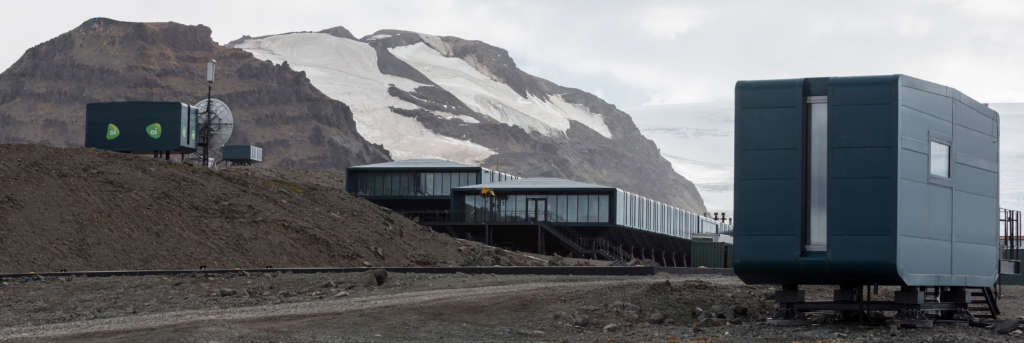
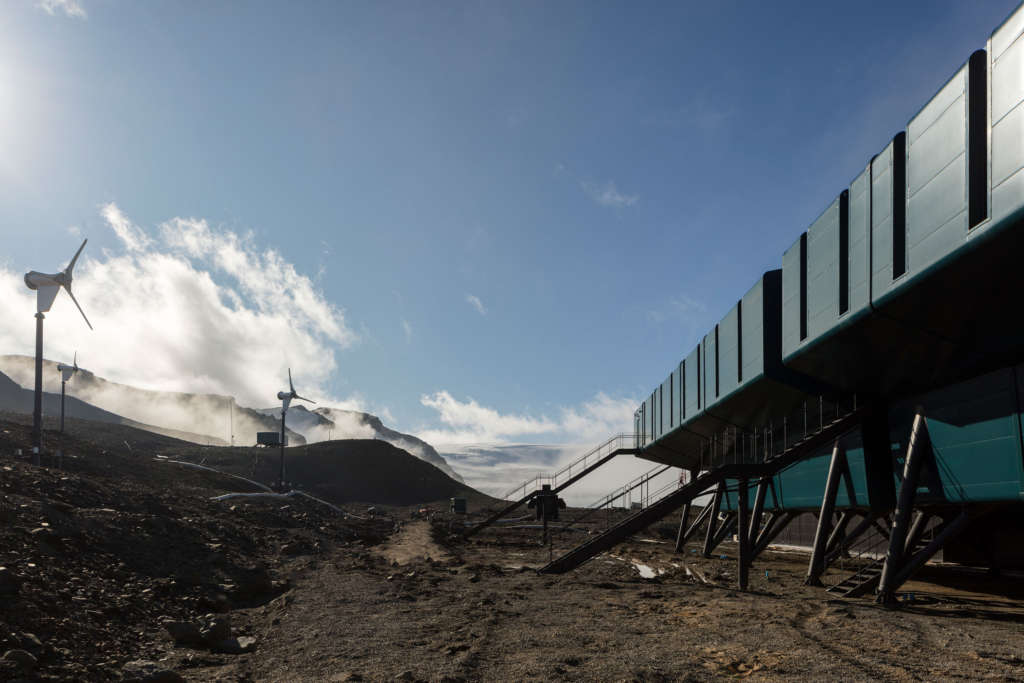
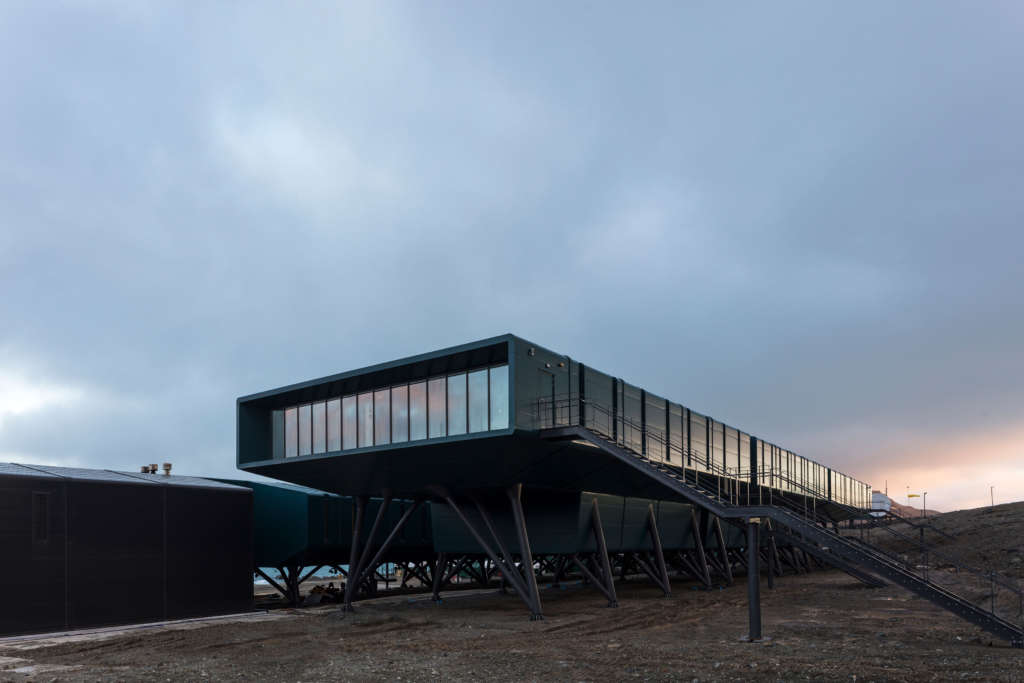
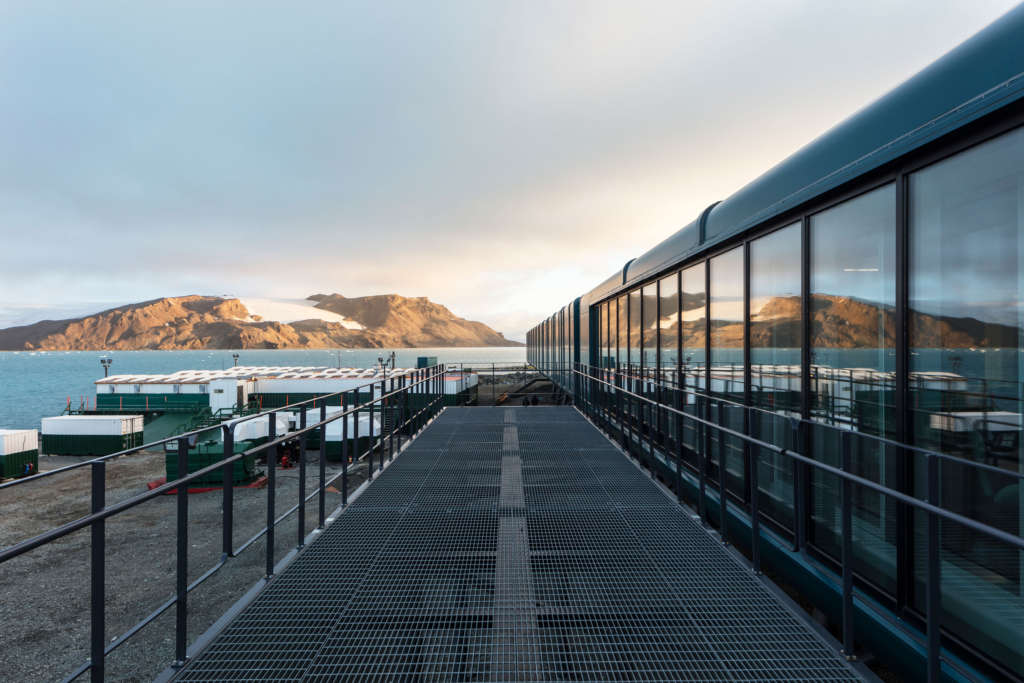
The void left by the fire that occurred in 2012 bears symbolism on the importance of this new construction; it represents the Brazilian presence in Antarctica as a possibility for scientific contribution together with the international community. It also represents an opportunity for technological development for Brazilian architecture and for national industry.
On the other hand, the design process leads us to gradually understand the fragility of human life and how to act to solve constructive, functional, and sensory problems. In this sense, decisions are made carefully, as it is necessary to respect nature and understand that there are challenges to be overcome before reaching the constructed building.
The present proposal for Ferraz Station starts with the interpretation of the territory and the geographical conditions of the region. Therefore, the implementation of the proposed buildings takes into account the topography of the Keller Peninsula and the need to preserve the surrounding animal and plant life areas, among other factors. Several conditions provided for by the Environmental Use Zoning are respected in order to minimize impacts on nature.
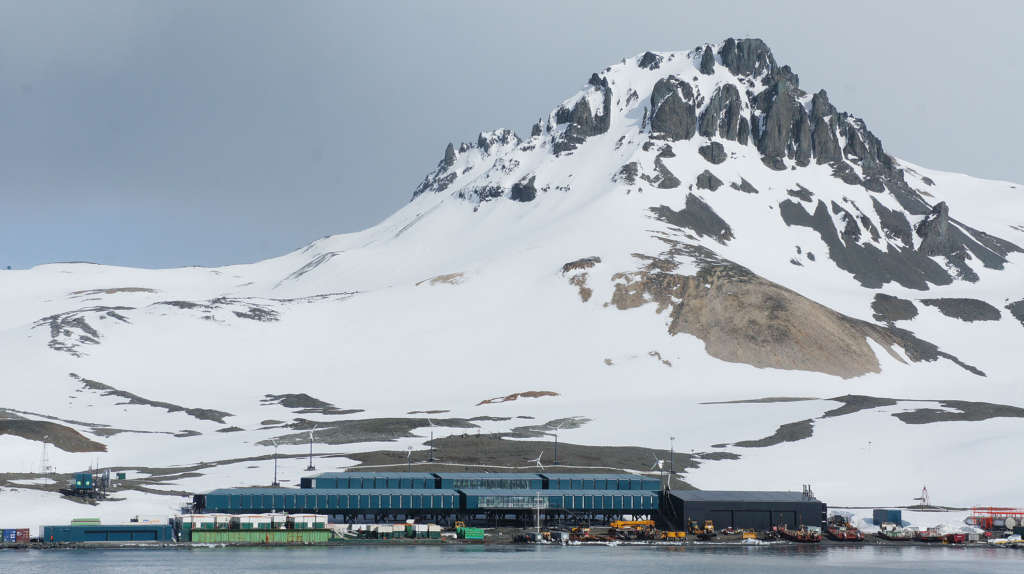


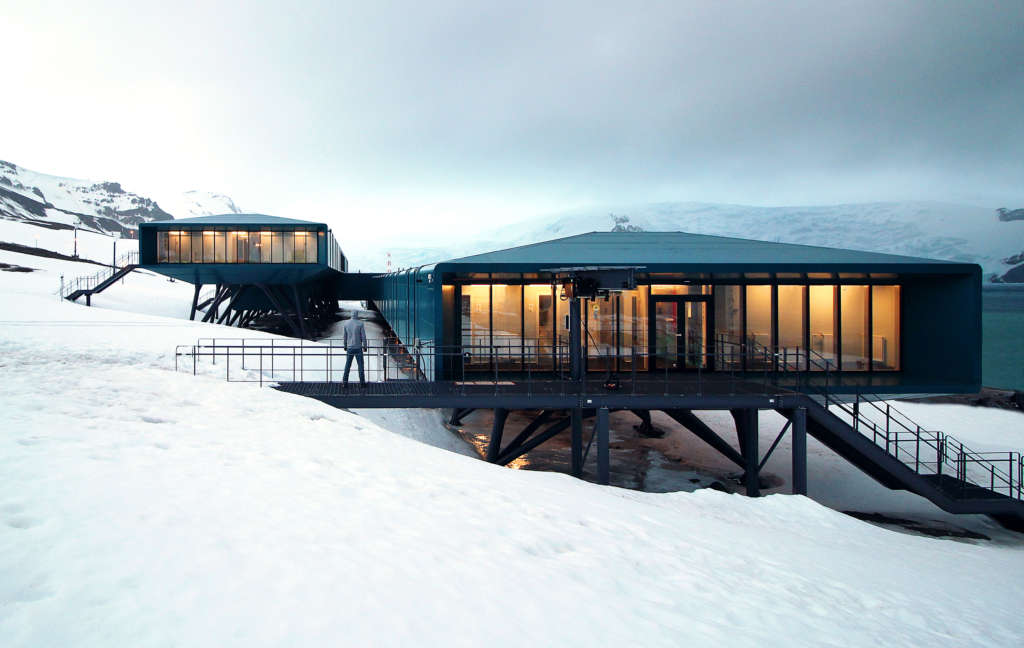
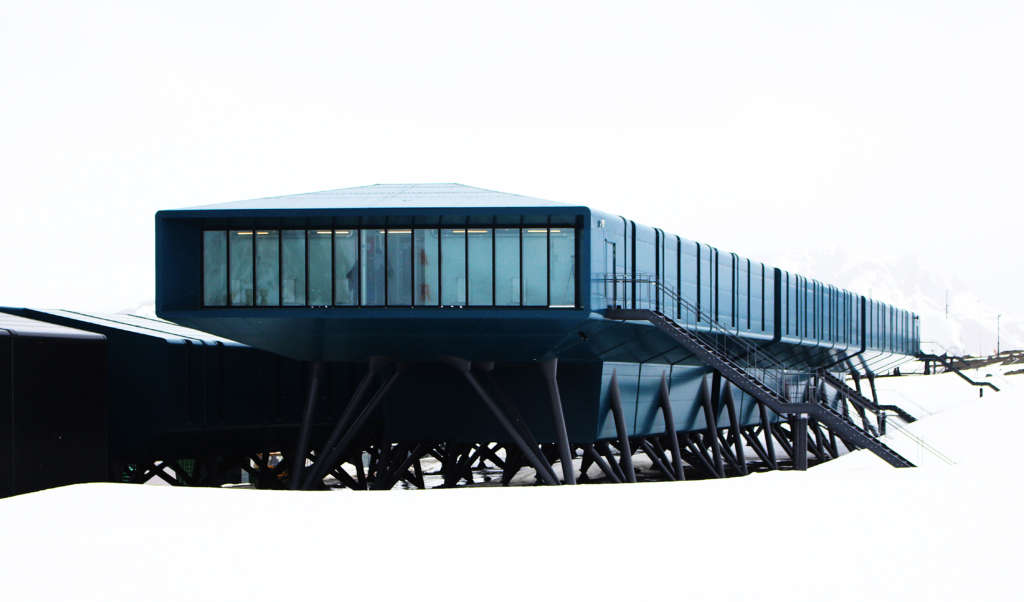
The functional sectors are organized in blocks that distribute the uses. The upper block, on the +9.10 level, houses the cabins, service areas, and the dining/living area. In the lower block, at level +5.95, the laboratories and the areas of operation and maintenance were incorporated. This same block houses the garages and the central storeroom, located on the +2.50 level.
A transversal block, also at the +5.95 level, brings together social and convivial uses. In this section are located the video/auditorium room, the lan house, the meeting/video conference room, the library, and the living room.
The implementation is completed with photovoltaic panel plants in the north and VAWT wind turbines in the southwest.
Project Details
- Total built area (main building and isolated units): 4,916.59 m²
- Laboratories built area: 1,253.72 m²
- 17 research labs
- 8 wind turbine units, photovoltaic panels and solar collectors.
- Systems: power generation, water treatment, sewage treatment and solid waste processing.
Architects
ESTÚDIO 41 Arquitetura
- Emerson Vidigal, Eron Costin, Fabio Henrique Faria, João Gabriel Rosa, Dario Corrêa Durce, Moacir Zancopé Jr.
- Team: Martin Goic, Fernando Moleta, Felipe Santos, Alexandre Kenji, Rafael Fischer
Complementary Projects
AFA CONSULT
- Structures: Rui Furtado, Filipe Arteiro
- Geotechnics: Rui Furtado, Filipe Arteiro, Filipe Afonso
- Hydrosanitary installations: Paulo Silva, Alexandra Vicente
- Mechanical Systems: Marco Carvalho, Isabel Sarmento, Tiago Teixeira
- Electrical Installations: Raul Serafim, Luis Oliveira
- Telecommunications: Raul Serafim, Luis Oliveira
- Fire Safety: Maria da Luz Santiago
- Solid Waste: João Oliveira
- Acoustics: Octávio Inácio
Consultants
- Envelope: Stephan Heinlein
- Geotechnics: Pedro Huergo, Eng. Josiele Patias
- Comfort and Energy (PETINELLI): Architect Guido Petinelli
- Mechanical Engineer: Eduardo Brofman
- Facilities: Eng. Eduardo Ribeiro
- Security and Fire Prevention: Architect Carlos Garmatter;
- Structures: Eng. Ricardo Dias
- Photographs: Eron Costin, Studio 41


